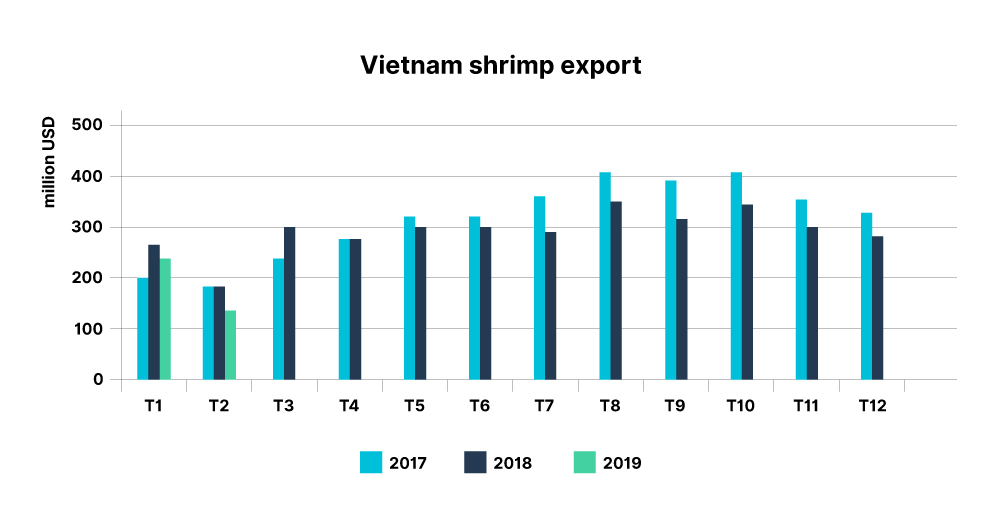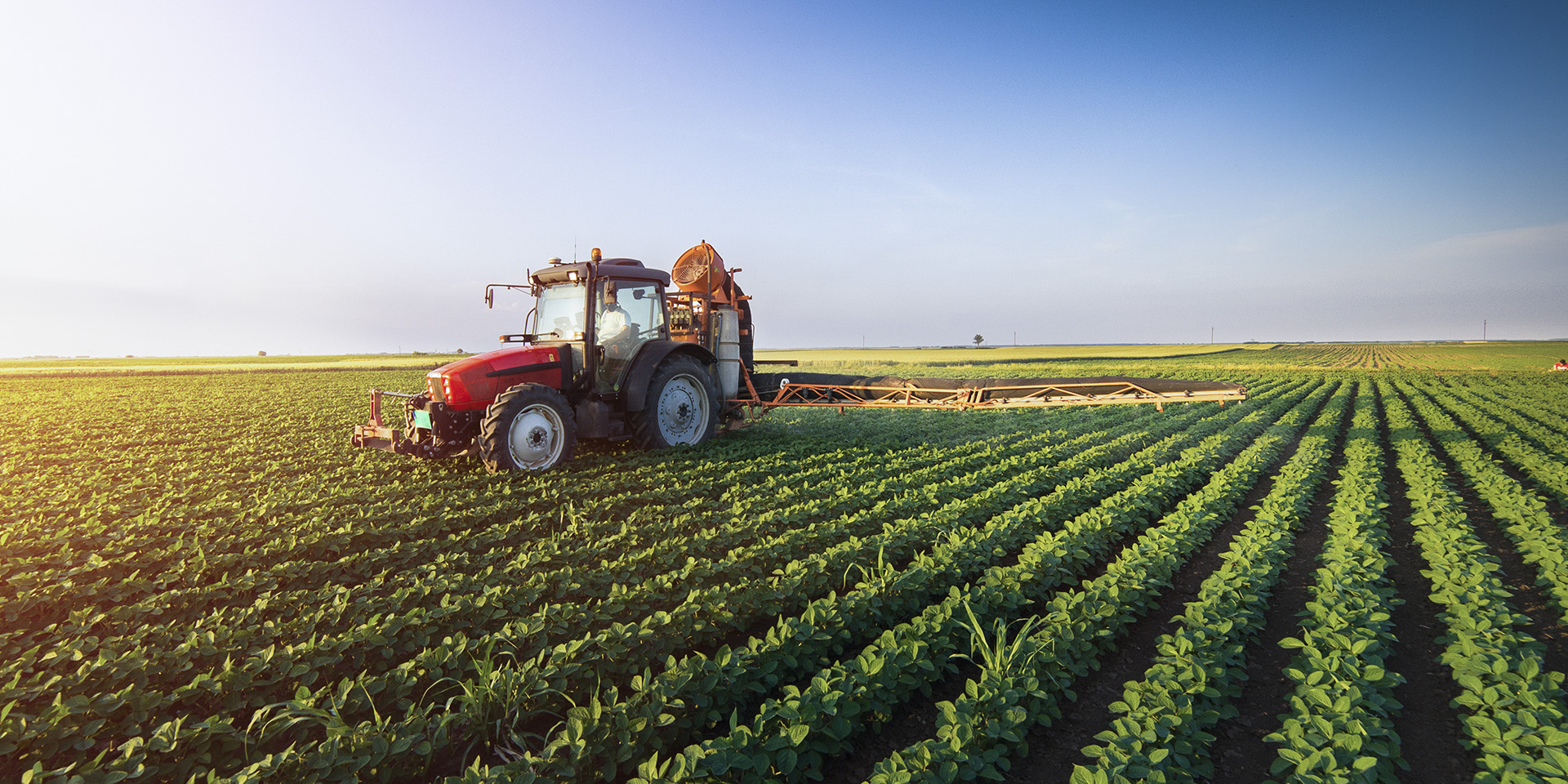Difficulties in controlling the quality of input and output products and farming methods, together with tight export policies force enterprises within the industry to find suitable and thorough solutions.
For nearly 20 years, Vietnam’s aquaculture production and exploitation have been growing. The export turnover of Vietnam’s aquatic products, thereby, has also increased steadily, making Vietnam to become one of the five largest aquatic products exporting countries in the world(1). EU, USA, Japan are currently the three leading markets in aquatic products export turnover in Vietnam(2). However, in the past 3 years, Vietnam’s aquatic export market has to face with more challenges because of a range of strict controlling regulations and policies from these imported countries.

Many policies tightening aquatic goods imported from major markets
In Oct 2017, due to a violation of illegal fishing, Vietnam received IUU Gold card from European Commission (EC) on aquatic food exportation, making it difficult to export aquatic products. Aquatic goods imported from Vietnam have been and are expected to be increased in the test frequency up to 100%(3). This also leads to the result that the number of Vietnamese aquatic goods exported to this market and then returned has spiked. These products do not meet the EU food safety requirements due to contain excess contents allowed or include prohibited substances to be used in food.
Not only for the EU market, according to the Directorate of Fisheries, starting on January 1st 2018, the U.S. also made the decision to deploy SIMP(4) – an exploitation and importation supervising program on 13 aquatic species imported into this country. This program also has a great impact on aquaculture companies in Vietnam, as most of this production model in Vietnam has a small individual size, hence, it is difficult to meet the regulations of the importing country. This requires aquatic food exporting enterprises to strictly implement the Declaration of product origin.
For the Japanese market, from April 1st 2017(5), this country also applies a strict test mode of 100% to certain aquatic imported goods from Vietnam to avoid food safety risks, caused by food containing toxins or excess of harmful substances for health.
Difficult to control aquatic food quality with manual farming methods
Looking back at the above policies, the requirements of the aquatic food importing markets can be encapsulated in 2 issues: food safety and products’ origin declaration. If Vietnamese enterprises are unable to meet these requirements, the market situation for aquatic products export in the coming years will be increasingly difficult.
The problem of aquatic food contaminated with prohibited or redundant substances allowed, has been an issue for aquaculture enterprises in Vietnam for many years. So why is this matter still not improving? The main cause exists in the method of aquaculture farming, which is still too manual and small, while the management mechanism still has many restrictions.
1. Individual households lack the knowledge of cultivating while abuse antibiotics
According to Mr. Ho Quoc Luc, General Director of Sao Ta foods joint stock company (in Soc Trang) at the Conference of aquatic food safety control for export(6), for the goods that businesses cannot farm themselves but have to acquire from resident households, the matter of quality control is very difficult to be done due to the fact that these households arbitrarily increase the amount of antibiotics and drugs to ensure the living possibility for aquatic products. Therefore, the products are infected with antibiotics and multiple pathogens.
On the market, the aquaculture drugs are sold and advertised rampantly, the farmers could not distinguish which drugs should and should not be abused or used, causing the excess of antibiotics and banned substances found in the product. This also leads to contamination of water environment, which increases the number of dead farming shrimps and fishes, while the products do not meet the requirements in both quality and quantity for export. As a result, enterprises must import more input material from other countries such as India and Thailand for processing. If the EU and US market strictly require the declaration of product origin to combat fraud on goods origin, apparently, Vietnam has violated this law.
2. Control the quality of inputs and outputs arbitrarily
For businesses to cultivate aquaculture products on their own, high capital investment is required together with large areas of farming and vast funding. Therefore, the majority of Vietnamese enterprises still have to acquire aquaculture materials from individual households. The quality control of inputs products purchased from individual households are also randomly taken by the businesses. Procurement enterprises will randomly inspect purchased products by measuring the amount of substances in the sample product, this stage takes a lot of time while the results are not comprehensive and have high tolerances if the number of purchased products is large from individual households.
3. The farming household management process exists only on papers
The abuse of drugs and antibiotics occurs because of the fact that the farming households lack knowledge about this issue. In addition, there is no organization that offer training, support and management for these household in farming effectively, so it is not entirely the farmers’ fault for producing low quality aquaculture products.
According to FPT’s survey, the process of procurement and control of product quality is still being recorded on papers/documents, or on simple text software. The relationship between the procurement enterprises and farming households only exists in the form of definitive purchase and definitive sale, lacks strict monitoring and management, thus, the guarantee of the quality of products faces more challenges, not to mention the trace-ability of food in the inadequacy of information.
The input does not guarantee quality, therefore, the product output also does not reach the required international targets, which is the cause of many aquatic goods from Vietnam returned by the imported country. This leads to major losses for enterprises as well as farming business households in particular and the aquatic goods export markets in general.

Product quality control solutions for aquaculture enterprises
The Government of Viet Nam is changing the legal and policy framework for aquaculture farming and exploitation, especially since Vietnam has been assigned the IUU Gold card. However, these policies can only help somewhat for the Vietnam fisheries industry. Once the process of aquatic products cultivating and management is still manual and not strict, businesses will hardly stand firmly in front of the changing requirements of the imported countries. Vietnamese aquaculture enterprises need to change conception towards a safe and sustainable aquaculture development and avoid the immediate profit-making mindset.
Improving the management and quality control of aquatic products requires enterprises to solve the following mandatory issues:
1. Manage farming households efficiently
By monitoring and managing daily cultivation dairy of individual households, businesses can ensure the transparency of their suppliers, while overseeing a large number of farming units on the same platform, saving time for in-place and scattered survey. The platform will help businesses monitor fluctuations in farming, thereby making decisions to act quickly when there are changes.
2. Provide solutions to support farming households
Farming households mainly cultivate based on experience, thereby, leading to low yield, chemical contaminated and diseased products. proactive business provides technical solutions such as self-monitoring farmer support, automated alert systems, and a prediction system that will help households increase productivity, minimize risks in farming. This system requires the commitment of the stakeholders.
3. Control the quality of input and output products precisely and comprehensively
Instead of using the human power to verify aquatic products’ quality, spectral light technology is being researched for the purpose of defining the amount of substances in the product quickly, accurately, comprehensively and time-saving. This will help businesses reduce costs from using of a large amount of labor for the current test method, while solving food safety quality issue.
4. Manage trace-ability with the affirmation of stakeholders
Trace-ability brings many outstanding benefits to the businesses, helping them build trust with consumers and affirm their position in the market. Many developed countries have decided to perform trace-ability on food products. Therefore, this is a mandatory condition for aquatic food exporting enterprises.
Currently, many businesses have begun implementing trace-ability. However, the retrieval code is usually produced by the business itself, hence, it is not valid enough to persuade the consumer to trust. Trace-ability requires stakeholders within the value chain to confirm their transactions, while providing coherent information about those transactions. By having producers and suppliers manage trace-ability, businesses show their responsibility in managing products as well as ensuring the credibility to the end consumer.
Reference sources
(1) VASEP. 2018. Vietnam’s Fisheries industry overview.
(2) General Department of Vietnam Customs, 2019, Statistics of aquatic products exported abroad.
(3) VASEP, 2017, Conference of aquatic raw materials import for production and export.
(4) The Directorate of Fisheries in collaboration with the American Embassy in Vietnam and the Association of Seafood Exporters and Producers (VASEP), held in Ho Chi Minh city, 1/8/2018, Workshop on US Seafood Import Monitoring Program.
(5) Mr. Le Anh Ngoc, deputy Head of Department of Fisheries Quality, National Agro-Forestry-Fisheries Quality Assurance Department (NAFIQAD) .
(6) The Conference of aquatic food safety control for export, 29/10/2015, Ho Chi Minh City.




